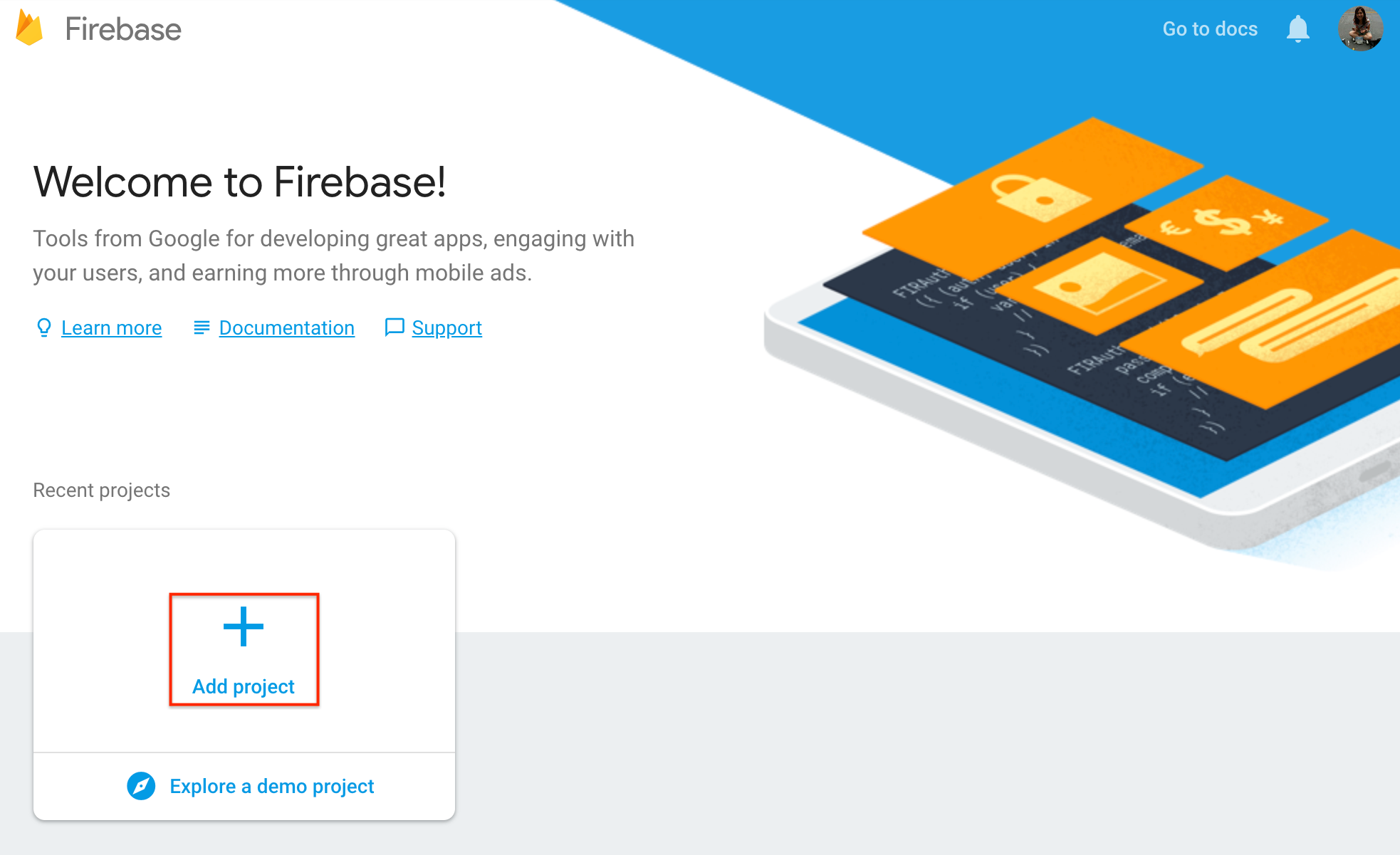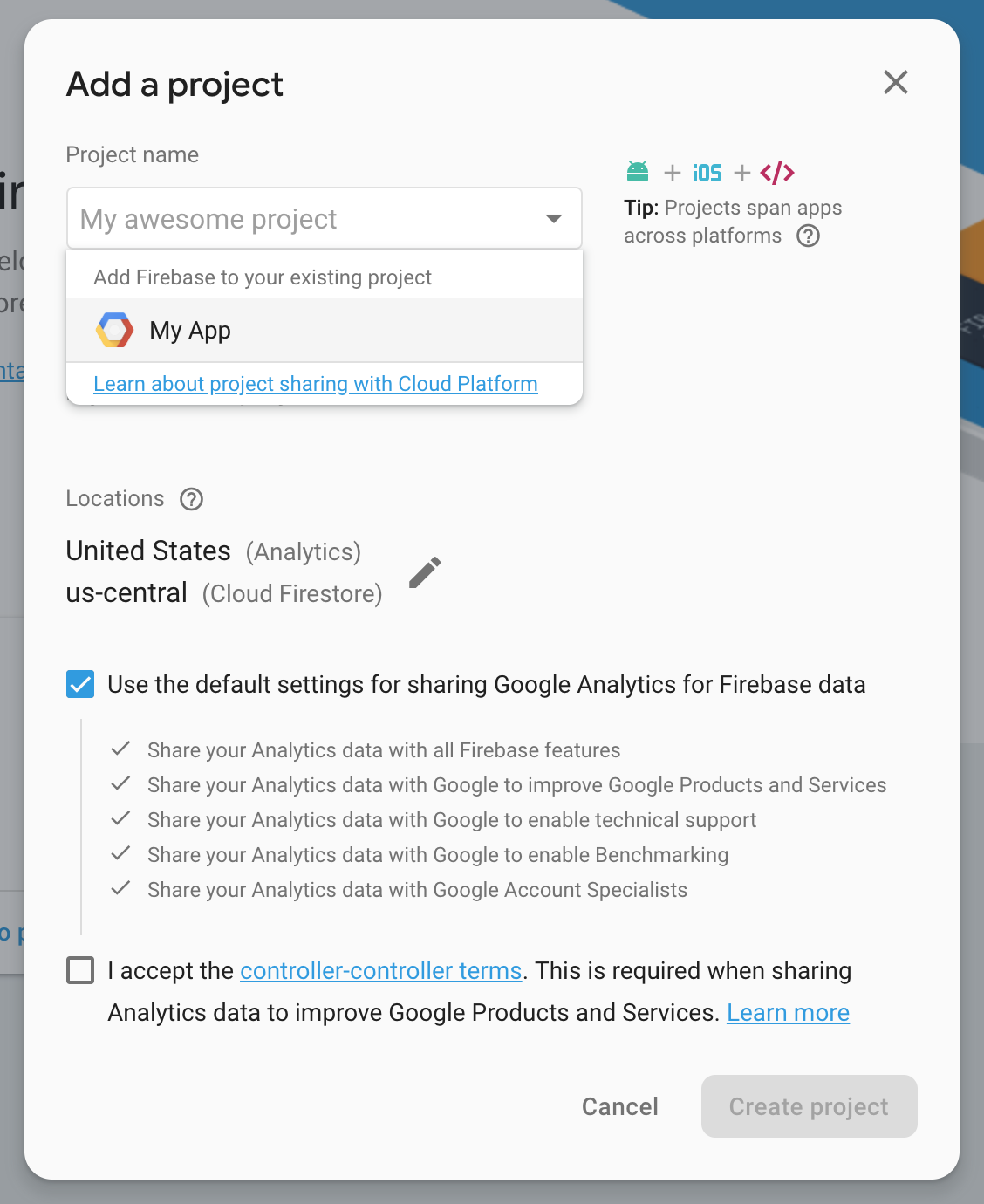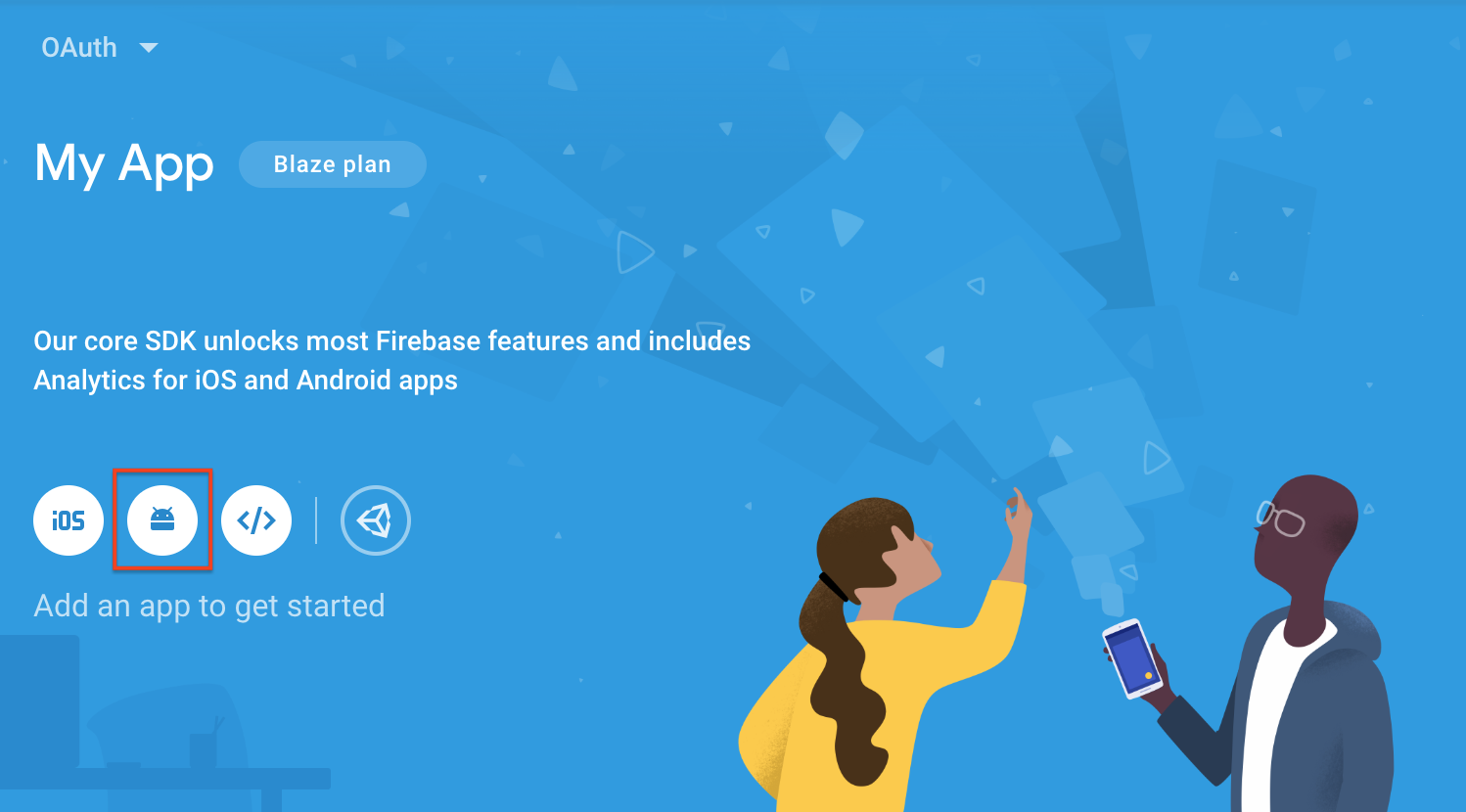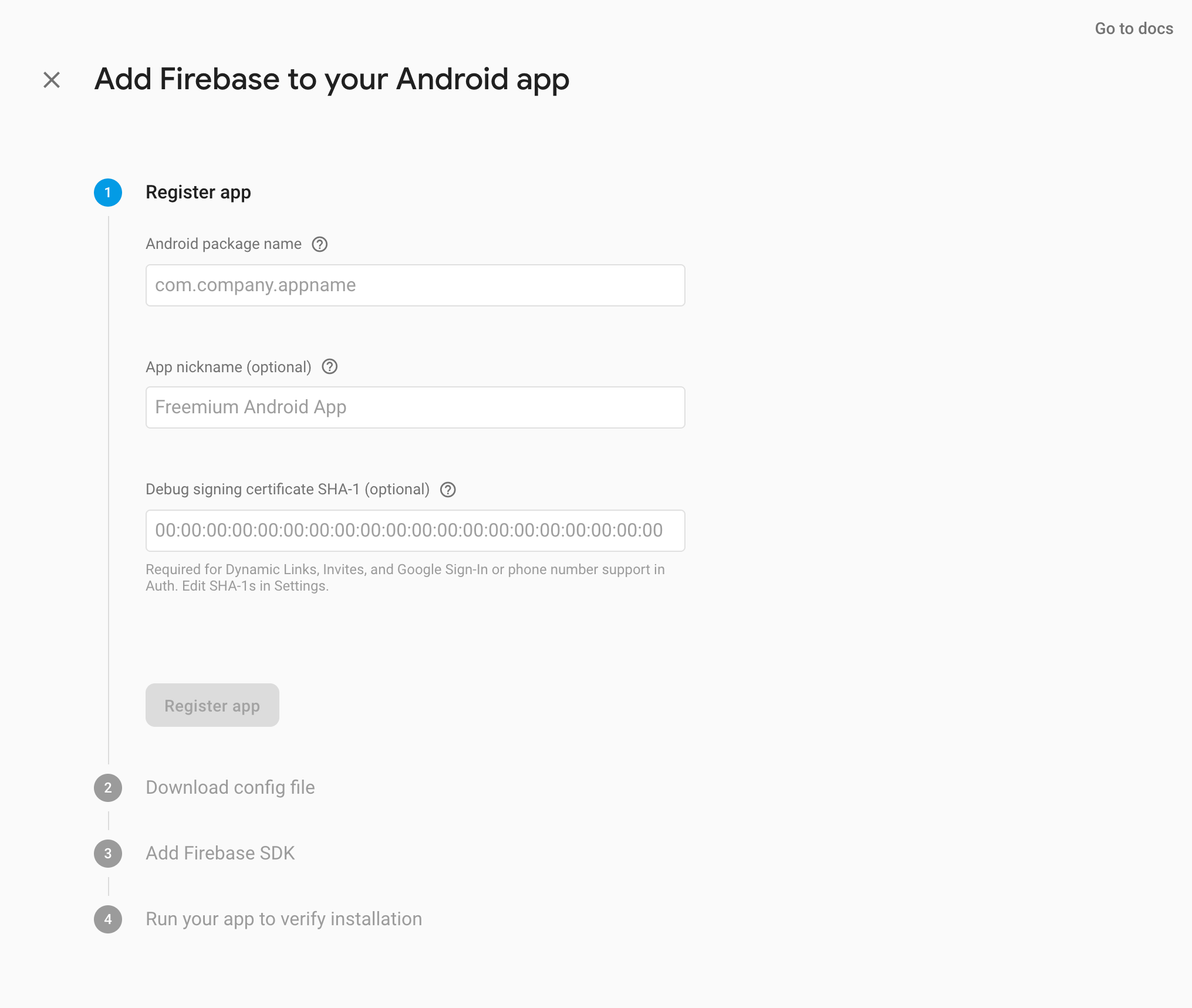Migrate to FCM from GCM
As of April 10, 2018, Google has deprecated GCM. For apps that are using GCM in Skygear for Android push notifications, you can follow the below steps to migrate from GCM to FCM.
- Update Skygear server to v1.7.0+
- Migrate from GCM setup to FCM in android client
Update Skygear server
After updating Skygear server to v1.7.0+, Skygear server will use the configured server key with FCM API automatically. There's no need to reconfigure.
(Optional) Skygear support sending FCM through Firebase Admin SDK by providing service account credentials. Detail see: Using service account with Firebase Admin SDK
Migrate from GCM setup to FCM in android client
-
Add Firebase to existing GCM project
- Go to Firebase Console, click Add project.

- Select the existing project and add firebase.

-
Select Add Firebase to your android app

-
Complete the Add Firebase to your android app setup flow

-
Fill in the form and download the
google-services.jsonfile. -
Put the
google-services.jsoninto your Android app module root directory. -
Add the Google services plugin into your project by modifying the
build.gradlefiles. The plugin will load thegoogle-services.jsonfile.Project-level
build.gradle(<project>/build.gradle):buildscript { dependencies { // Add this line classpath 'com.google.gms:google-services:4.0.1' } }App-level
build.gradle(<project>/<app-module>/build.gradle):dependencies { // Add this line implementation 'com.google.firebase:firebase-core:16.0.6' } ... // Add to the bottom of the file apply plugin: 'com.google.gms.google-services'
-
-
Update the Skygear Android SDK to v1.7.0+
-
Replace the GCM with FCM setup in your code
-
Remove GCM sender id setting
If you are using
Configuration.Builder:Configuration config = new Configuration.Builder() .endPoint("https://<your-app-name>.skygeario.com/") .apiKey("<your-api-key>") // Remove `gcmSenderId` .gcmSenderId("<your-gcm-sender-id>") .build(); Container.defaultContainer(this).configure(config);If you are extending
SkygearApplication:public class MyApplication extends SkygearApplication { // Remove `getGcmSenderId` method @Override public String getGcmSenderId() { return "<your-gcm-sender-id>"; } } -
Remove GCM Token Registration Triggering
Remove the GSM token registration codes. We will use
FirebaseMessagingServiceto obtain device token.Container skygear = Container.defaultContainer(this); if (skygear.getPush().getGcmSenderId() != null) { Intent gcmTokenRegisterIntent = new Intent(this, RegistrationIntentService.class); this.startService(gcmTokenRegisterIntent); } -
Update the
AndroidManifest.xmlCase 1: If you haven't override notification
Update the
AndroidManifest.xmlto use Skygear default messaging service, make sure to remove obsolete elements from your app's manifest.Before
<?xml version="1.0" encoding="utf-8"?> <manifest xmlns:android="http://schemas.android.com/apk/res/android" package="your.app.package"> <!-- other permissions --> <uses-permission android:name="android.permission.WAKE_LOCK" /> <permission android:name="your.app.package.permission.C2D_MESSAGE" android:protectionLevel="signature" /> <uses-permission android:name="your.app.package.permission.C2D_MESSAGE" /> <application ...> <!-- Your Activity Declarations --> ... <!-- Delegate Skygear SDK to manage GCM Services --> <receiver android:name="com.google.android.gms.gcm.GcmReceiver" android:exported="true" android:permission="com.google.android.c2dm.permission.SEND"> <intent-filter> <action android:name="com.google.android.c2dm.intent.RECEIVE" /> <category android:name="your.app.package" /> </intent-filter> </receiver> <service android:name="io.skygear.skygear.gcm.ListenerService" android:exported="false"> <intent-filter> <action android:name="com.google.android.c2dm.intent.RECEIVE" /> </intent-filter> </service> <service android:name="io.skygear.skygear.gcm.InstanceIDListenerService" android:exported="false"> <intent-filter> <action android:name="com.google.android.gms.iid.InstanceID" /> </intent-filter> </service> <service android:name="io.skygear.skygear.gcm.RegistrationIntentService" android:exported="false"> </service> </application> </manifest>After
<?xml version="1.0" encoding="utf-8"?> <manifest xmlns:android="http://schemas.android.com/apk/res/android" package="your.app.package"> <application ...> <!-- Your Activity Declarations --> ... <service android:name="io.skygear.skygear.fcm.FirebaseMessagingService"> <intent-filter> <action android:name="com.google.firebase.MESSAGING_EVENT" /> </intent-filter> </service> </application> </manifest>Case 2: If you have override notification
Similar with case 1, but replacing your
GcmListenerServicewith newFirebaseMessagingService.Before
public class MyListenerService extends com.google.android.gms.gcm.GcmListenerService { @Override public void onMessageReceived(String s, Bundle bundle) { super.onMessageReceived(s, bundle); /* Handle the GCM notification */ } }After
public class MyFirebaseMessagingService extends com.google.firebase.messaging.FirebaseMessagingService { @Override public void onNewToken(String token) { // send registration to skygear server Container container = Container.defaultContainer(this.getApplicationContext()); container.getPush().registerDeviceToken(token); } public void onMessageReceived(RemoteMessage remoteMessage) { super.onMessageReceived(remoteMessage); // Handle the FCM notification } }Update the
AndroidManifest.xmlto use your own messaging service, make sure to remove obsolete elements from your app's manifest.Before
<?xml version="1.0" encoding="utf-8"?> <manifest xmlns:android="http://schemas.android.com/apk/res/android" package="your.app.package"> <!-- other permissions --> <uses-permission android:name="android.permission.WAKE_LOCK" /> <permission android:name="your.app.package.permission.C2D_MESSAGE" android:protectionLevel="signature" /> <uses-permission android:name="your.app.package.permission.C2D_MESSAGE" /> <application ...> <!-- Your Activity Declarations --> ... <!-- Delegate Skygear SDK to manage GCM Services --> <receiver android:name="com.google.android.gms.gcm.GcmReceiver" android:exported="true" android:permission="com.google.android.c2dm.permission.SEND"> <intent-filter> <action android:name="com.google.android.c2dm.intent.RECEIVE" /> <category android:name="your.app.package" /> </intent-filter> </receiver> <service android:name="io.skygear.skygear.gcm.ListenerService" android:exported="false"> <intent-filter> <action android:name="com.google.android.c2dm.intent.RECEIVE" /> </intent-filter> </service> <service android:name="io.skygear.skygear.gcm.InstanceIDListenerService" android:exported="false"> <intent-filter> <action android:name="com.google.android.gms.iid.InstanceID" /> </intent-filter> </service> <service android:name="io.skygear.skygear.gcm.RegistrationIntentService" android:exported="false"> </service> </application> </manifest>After
<?xml version="1.0" encoding="utf-8"?> <manifest xmlns:android="http://schemas.android.com/apk/res/android" package="your.app.package"> <application ...> <!-- Your Activity Declarations --> ... <!-- Use your messaging service --> <service android:name=".MyFirebaseMessagingService"> <intent-filter> <action android:name="com.google.firebase.MESSAGING_EVENT" /> </intent-filter> </service> </application> </manifest>
-